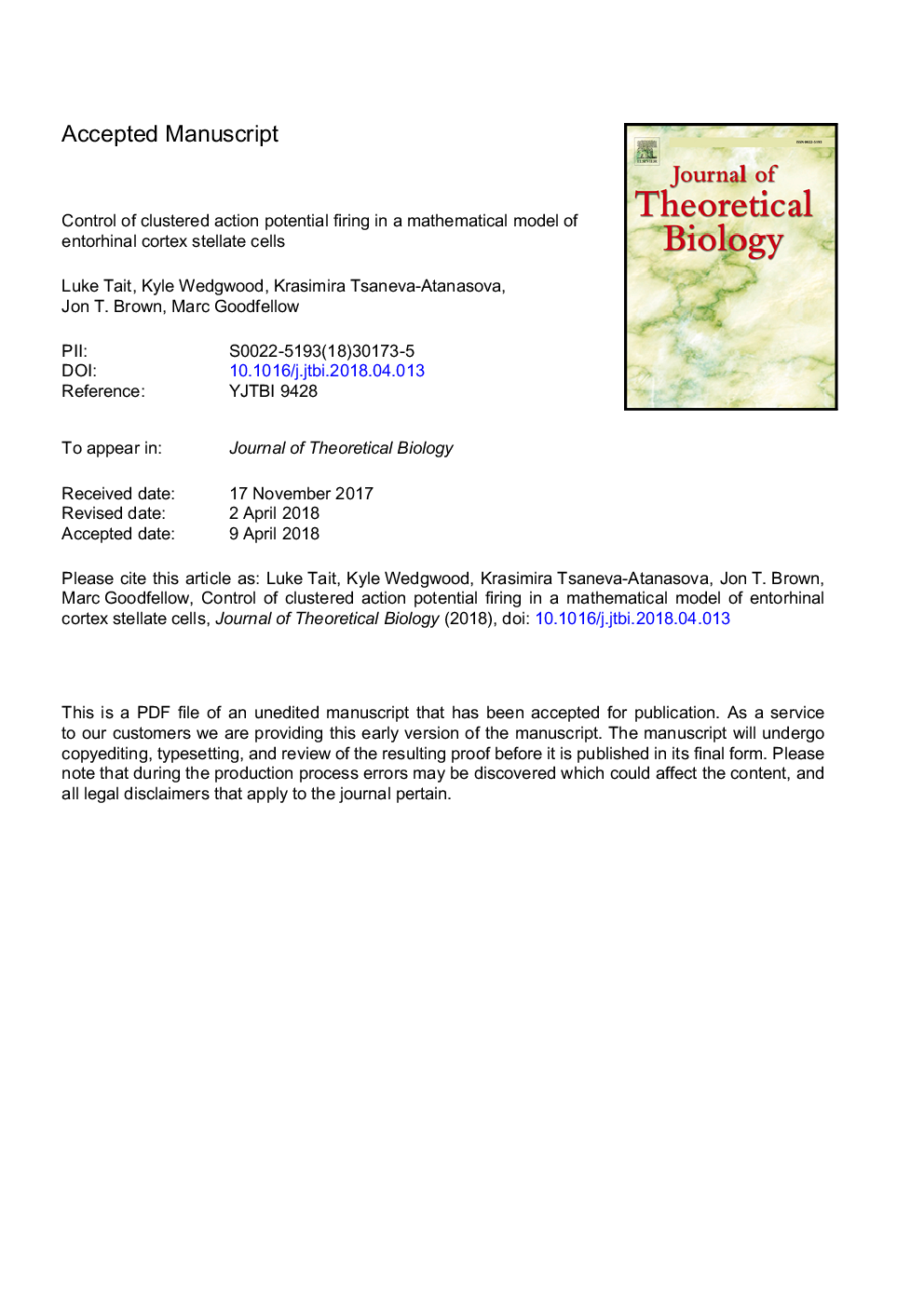| Article ID | Journal | Published Year | Pages | File Type |
|---|---|---|---|---|
| 8876664 | Journal of Theoretical Biology | 2018 | 24 Pages |
Abstract
To better understand the mechanisms underpinning these different dynamics, we study a conductance based model of mEC-SCs. We demonstrate that the model, driven by extrinsic noise, can capture quantitative differences in clustered action potential firing patterns recorded from experimental models of tau pathology and healthy animals. The differential equation formulation of our model allows us to perform numerical bifurcation analyses in order to uncover the dynamic mechanisms underlying these patterns. We show that clustered dynamics can be understood as subcritical Hopf/homoclinic bursting in a fast-slow system where the slow sub-system is governed by activation of the persistent sodium current and inactivation of the slow A-type potassium current. In the full system, we demonstrate that clustered firing arises via flip bifurcations as conductance parameters are varied. Our model analyses confirm the experimentally suggested hypothesis that the breakdown of clustered dynamics in disease occurs via increases in AHP conductance.
Related Topics
Life Sciences
Agricultural and Biological Sciences
Agricultural and Biological Sciences (General)
Authors
Luke Tait, Kyle Wedgwood, Krasimira Tsaneva-Atanasova, Jon T. Brown, Marc Goodfellow,
